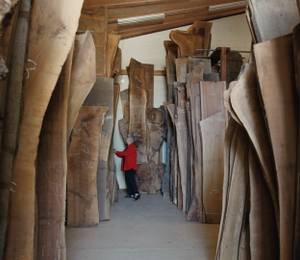Singapore – RSP, a leading global multidisciplinary architectural and engineering design group headquartered in Singapore, has been recognised at the 12th Annual Architizer A+Awards with two big wins for Gaia and Changi Terminal 2 projects, beating world-class project submissions from over 80 countries.
Gaia, Asia’s largest timber building located at Nanyang Technological University (NTU) and designed in partnership with Toyo Ito & Associates, Architects, receives one of the top accolades of the Sustainability Awards as the Jury Winner in the Sustainable Institutional Building category. The Sustainability Awards recognizes architecture and design firms who are actively working towards a more sustainable built environment, taking into consideration each project’s local characteristics, while rewarding projects that push the envelope and form a positive precedent for greener building practices in its specific region and the wider world.
“It is an honour for the whole team who had worked tirelessly with NTU on Gaia to win the hearts of the prestigious jury comprised of thought leaders from every continent. Gaia is a testament to our commitment in designing remarkable and radical spaces that are intelligent, energy-saving, environmentally friendly, efficient, and more thoughtful for users. I truly hope Gaia could inspire a future where architecture is a bridge between humanity and the natural world,” quips project leader Loh Kee Soon, Senior Associate at RSP.
Changi Terminal 2, designed in collaboration with Paris-based BOIFFILS Architecture, clinches the Popular Choice Winner award in the Transport Interiors category with its relaxing and organic space inspired by Singapore’s garden city.
“Receiving the Popular Choice Winner for Changi Terminal 2 is about so much more than winning a prize. In closer perspective, it is about successfully creating an impact on the millions of overseas users and designers who voted for this project,” shared Law Yoke Foong, Head of Business and Executive Director at RSP, who led the project. “I have always loved working on airports as an architect, having completed Changi Terminal 1 Expansion, pockets of works in Terminals 3 and 4, and now Terminal 2. It is my personal mission to use design as a means to cushion passenger fatigue and disorientation by welcoming them into our garden city with relaxing and calming spaces.”













